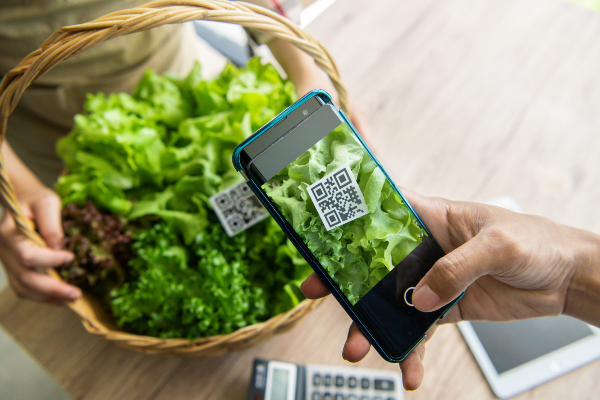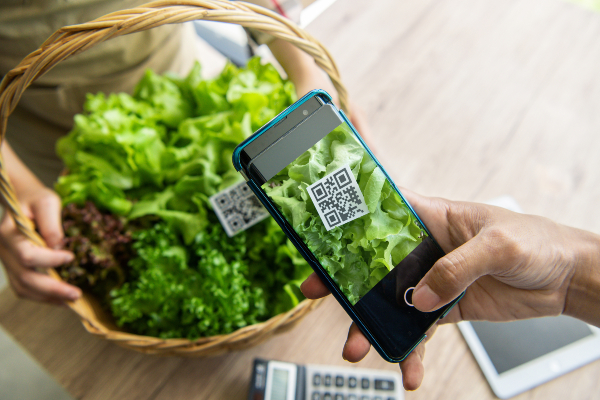Fighting food fraud from farm to fork with a mobile ingredient tracing system A communication framework to support diversified food production at any scale Research news


Researchers at the University of Tokyo with collaborators at the French National Centre for Scientific Research (CNRS) have designed a mobile-based traceability system to trace food from farm to fork, providing peace of mind to diners all over the world. © Shutter2U/Adobe Stock.com
Savvy shoppers increasingly expect to know the origin of the food they eat, whether they shop at farmers’ markets or big-box major retailers. A prototype app proposed by researchers at the University of Tokyo aims to provide full transparency from farm to table along food supply chains and meet the needs of smallholder farmers, boutique producers, and industrial growers.
Official food certification systems exist in many countries, but experts say the financial cost of implementation and the labor costs of maintenance are impractical for small-scale producers. Existing certifications systems can also be exploited by unscrupulous sellers who fake certificates or logos of authenticity for premium products, like Japanese wagyu beef and Italian Parmigiano Reggiano cheese, or for environmentally ethical products, like dolphin-safe tuna.
“Our motivation was to design a food tracking system that is cheap for smallholder farmers, convenient for consumers, and can prevent food fraud,” said Kaiyuan Lin, a third-year doctoral student at the University of Tokyo and first author of the research study published in Nature Food.
The research team’s food tracking system begins with the harvest of any ingredient, for example, rice on a family farm. The farmer opens the app on a mobile phone, enters details about the amount and type of rice, then creates and prints a QR code to attach to the bags of rice. A truck driver then scans the QR code and enters details into the app about where, when, and how the rice was transported to the market. A market vendor buys the rice, scans the QR code to register that the rice is now in their possession, and enters details about where and how the rice is stored before resale. Eventually, the vendor might sell some rice directly to consumers or other manufacturers who can scan the QR code and know where the rice originated.
“My mission is to make sure the system is not lying to you. Data are recorded in our digital system only when transactions happen person-to-person in the real, physical world, so there can be no fraud,” said Lin.
If an imposter registered counterfeit QR codes to dupe consumers, farmers would notice that their alleged harvest size suddenly duplicated itself in the app. Farmers can also choose to receive updates from the app about where, when, and in what form their harvest eventually reaches consumers.
“We think tracking their ingredients will appeal to farmers’ sense of craftsmanship and pride in their work,” said Lin.
The app can also turn a long list of ingredients into a single QR code. For example, a factory chef might buy rice from Taiwan, Kampot pepper from Cambodia and Kobe beef from Japan to manufacture into prepared meal kits. Only when physically receiving these ingredients can the factory record to their QR codes. After collecting all of the ingredients’ codes, the factory then uses the app to create a new QR code to attach to the completed meal kits. The factory can create a unique QR code for each new batch of meal kits every day. When consumers scan a meal kit’s QR code, they can read details about the kit as well as all of the origin of all the individual ingredients that are digitally connected to the kit’s QR code.
“The current barcode system means that every day of the year, forever, when you buy the same product, it will have the same barcode. Our system means small producers making small batches can generate a new QR code for each batch,” said Lin. This increased level of detail can also help regulators track food safety and manage any safety recalls more efficiently and precisely.
The app was designed with open-source software and a fully decentralized (peer-to-peer or multi-master) database, meaning that changes are not controlled by a centralized server. Data storage is spread out among every user’s phone or computer, so there is no central server to hack, providing consumers with even more peace of mind. Researchers hope the decentralized aspect of the app will further contribute to democratizing food systems.
For now, the app remains a hypothetical proposal in need of further financial support to become a reality.
“We have created a prototype demonstration of the infrastructure for a new system of accurate food traceability. Before we can all use the app on our next grocery shopping trip, computer coders and user interface designers will have to build the app and farmers will need printers for QR code stickers,” said Lin.
This research is a collaborative project with Complex Systems Institute of Paris Île-de-France, French National Centre for Scientific Research (CNRS).
Papers
Kaiyuan Lin, David Chavalarias, Maziyar Panahi, Tsaiching Yeh, Kazuhiro Takimoto, Masaru Mizoguchi, "Mobile-based traceability system for sustainable food supply networks," Nature Food: November 2, 2020, doi:10.1038/s43016-020-00163-y.
Link (Publication )
)
Related links
- Kaiyuan Lin profile

- Professor Masaru Mizoguchi profile

- Mizoguchi Lab (in Japanese)

- Graduate School of Agricultural and Life Sciences






